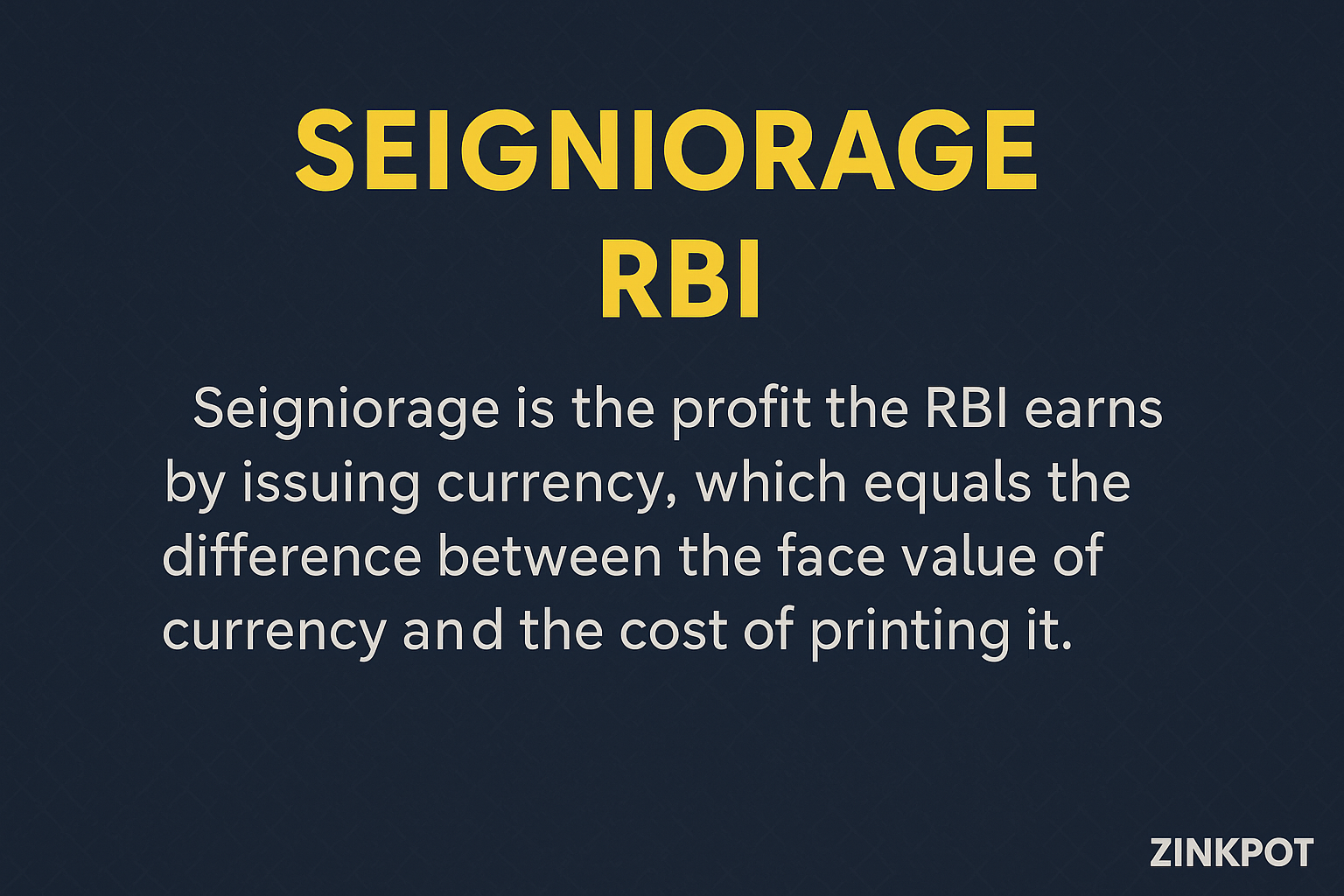

Seigniorage is the profit a government earns by issuing currency, particularly the difference between the face value of money and its production cost. It is also the revenue the government earns by printing money instead of borrowing or taxing.
Seigniorage = Face Value of Currency − Cost to Produce & Distribute It
It costs the RBI about ₹3 to print a ₹100 note. So, the seigniorage = ₹100 − ₹3 = ₹97. That ₹97 is essentially profit for the government, because it gets the benefit of spending money it created at little cost.
In India, the RBI prints the money, but any profit (including seigniorage) after operational expenses and reserves is transferred to the Government of India.
The RBI prints currency notes (except coins, which are minted by the government). It issues this currency to banks and the public in exchange for assets like Government securities (bonds), Foreign exchange reserves and others. The currency in circulation does not pay any interest to the holder. But the assets the RBI holds (like G-Secs or U.S. Treasuries) earn interest income. This is a key profit source as RBI earns income from interest-bearing assets it holds in return for giving out zero-interest currency.
Example
RBI prints ₹100 (cost = ₹3). It gives that ₹100 to a bank, which deposits it with RBI in return for ₹100 worth of government securities. RBI earns interest on that ₹100 in G-Secs. The public holds the ₹100 note without expecting any return. The difference in earnings and cost is seigniorage.
Comments
Write Comment